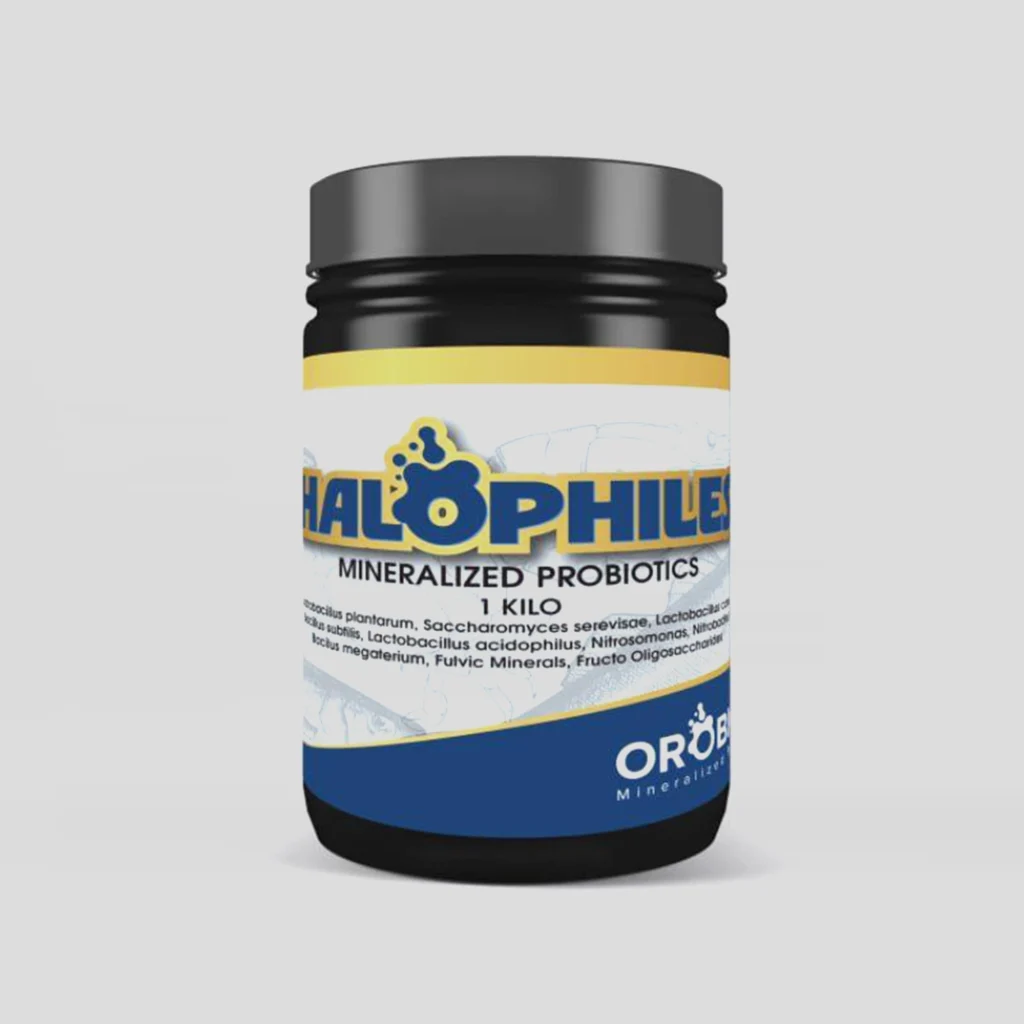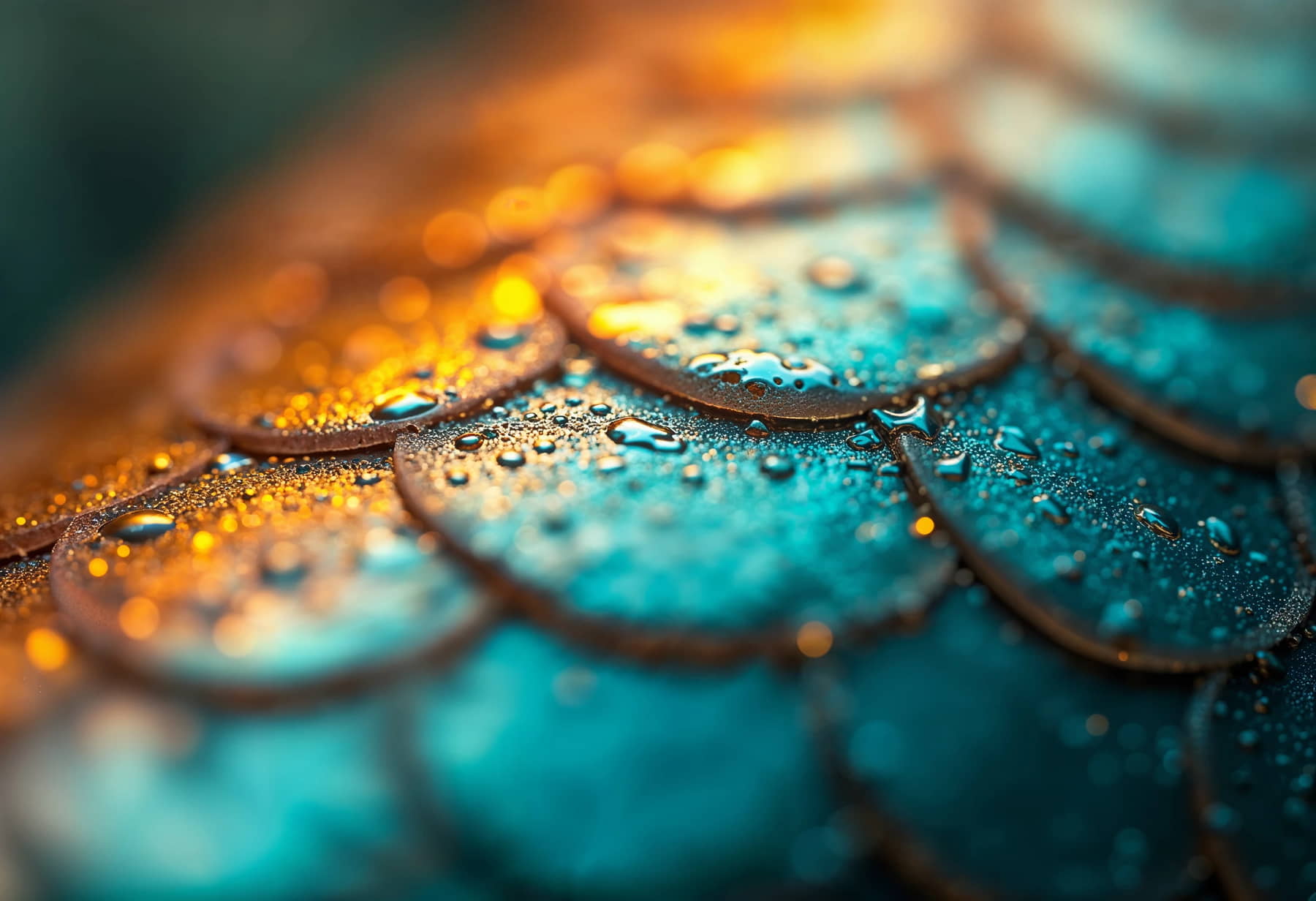

Halophiles
Variant: 1 Kilogram
The Game-Changer in Aquamarine Farming
Halophiles are microorganisms (or “good bacteria”) that thrive and function optimally in high-salinity environments—exactly the kind of environment shrimp farming relies on. Unlike ordinary probiotics that falter under saline stress, halophilic probiotics remain active, resilient, and highly effective, making them an essential tool for profitable and sustainable aquaculture.
The Secret to Resilient and Profitable Aquamarine Farming
In the world of aquaculture—especially for Shrimp, Prawns, Crabs, Milkfish (Bangus), and other marine species—salinity is not a challenge, it’s the environment. So why use probiotics that can’t handle salt?
Most common probiotic products in the market today are non-halophilic strains—meaning they’re weak or inactive in high-salinity water. This includes widely used bacteria like:
Lactobacillus rhamnosus – beneficial in freshwater systems but loses activity in saline ponds
Bacillus coagulans – effective in low-salinity but unstable at higher salt concentrations
Enterococcus faecium – prone to osmotic stress, leading to low survival in seawater-based environments
These non-halophiles fail when your aquamarine stock needs them most, leaving your pond vulnerable to water quality issues, disease outbreaks, and poor feed conversion.
Why Choose Halophilic Probiotics?
Halophilic microorganisms are good bacteria that naturally thrive and remain highly functional in salty environments—exactly where your Shrimp, Prawns, Crabs, and Bangus live and grow.
Real Halophilic Strains That Work:
Lactobacillus plantarum – survives salt, breaks down waste, prevents harmful bacteria from dominating
Bacillus subtilis – reduces ammonia, nitrogen, and phosphorus; produces enzymes to improve digestion
Nitrosomonas & Nitrobacter – manage the nitrogen cycle, detoxify harmful compounds
Saccharomyces cerevisiae – enhances feed absorption and boosts animal growth
What Halophiles Do That Others Can’t:
1. They Stay Active in Saline Water
Regular probiotics go dormant or die in salt-rich environments. Halophiles activate and multiply even in 20–35 ppt salinity—perfect for marine and brackish water farming.
2. They Purify Your Water Naturally
By breaking down organic matter and converting toxins like ammonia and nitrite into harmless compounds, halophilic probiotics maintain optimal water quality—a critical factor in survival and growth.
3. They Strengthen Immunity and Disease Resistance
A healthy microbial community in the gut and pond water means stronger natural defenses. Halophiles suppress pathogenic bacteria and reduce stress levels in your stock.
4. They Improve Growth and Feed Efficiency
Better digestion = better feed conversion. Halophiles unlock more nutrients from every pellet, helping your marine species grow faster and healthier—with lower feed costs.
5. They Make Farming Sustainable
With reduced need for antibiotics and chemical treatments, halophilic probiotics support eco-friendly aquaculture. Healthy ponds, healthy harvests, healthier profits.
If you are an Aquamarine Farmer:
“You wouldn’t raise milkfish or shrimp in freshwater. So why use freshwater probiotics in saltwater ponds? Only Halophilic Probiotics are built for the job. They don’t just survive—they perform, even in the toughest marine environments.
Whether you’re growing Shrimp, Prawns, Crabs, Bangus, or any saltwater species, Halophilic Probiotics are your pond’s best defense, best growth booster, and best investment. Don’t farm saltwater the freshwater way. Switch to what works. Choose Halophiles.”
STRAINS OF HALOPHILIC MICROORGANISM AND THEIR FUNCTIONS
Lactobacillus plantarum:
This probiotic bacterium is commonly used in aquaculture to improve water quality. L. plantarum can compete with harmful bacteria for resources, such as nutrients and space, thereby reducing the likelihood of pathogenic bacterial infections in the aquaculture system. Additionally, L. plantarum can help break down organic matter and reduce the build-up of toxic compounds in the water.
Lactobacillus casei:
Another beneficial probiotic bacterium, L. casei, can support the immune system of fish and shrimp in aquaculture. By promoting a healthy gut microbiome, L. casei can help protect aquatic animals from common diseases and improve their overall resistance to stress.
Lactobacillus acidophilus:
Like other probiotic bacteria, L. acidophilus can help maintain a healthy balance of beneficial bacteria in the aquaculture system. By outcompeting harmful bacteria and promoting a stable microbial community, L. acidophilus can improve water quality and support the growth of fish and shrimp.
Saccharomyces cerevisiae:
This yeast is known for its ability to enhance the digestion and absorption of nutrients in aquatic animals. By supplementing the aquaculture system with S. cerevisiae, fish and shrimp can better utilize their feed, leading to improved growth rates and overall health.
Bacillus subtilis:
This bacterium is known for its ability to produce enzymes that break down organic matter and promote the growth of beneficial bacteria. B. subtilis can help reduce the levels of nitrogen and phosphorus in the water, thereby improving water quality and reducing the risk of algal blooms.
Nitrosomonas and Nitrobacter:
These nitrite-oxidizing bacteria play a crucial role in the nitrogen cycle of aquaculture systems. Nitrosomonas convert ammonia into nitrite, and Nitrobacter convert nitrite into nitrate. By efficiently removing toxic ammonia and nitrite from the water, Nitrosomonas and Nitrobacter help maintain optimal water quality and prevent harm to aquatic animals.
Halophiles
Buy Now